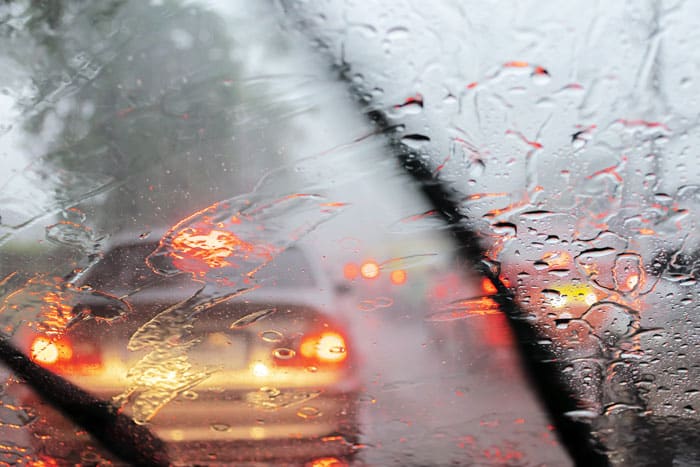How to Drive Safely in the Rain

Rain might not seem like a particularly serious hazard, but when it rains, accident rates shoot up. Intense rainfall can lead to flooding and make it significantly harder for drivers to maintain control of their vehicles. New drivers need to be particularly aware of the hazards that rain presents and how to mitigate them.
Turn Your Headlights On
Wet roads can be unpredictable; unexpected wet weather presents a severe hazard for inexperienced drivers. One of the most basic but most important tips for driving in the rain is to turn your headlights on. New drivers are often surprised by how dramatically rain can reduce their visibility.
Watch Out for Wet Leaves
Wet leaves will reduce your tyres’ contact with the road, making it more difficult to stop when you press the brake pedal. If the car in front of you has to brake suddenly, wet leaves can significantly increase the distance your car travels. If you find yourself driving over a road strewn with wet leaves, make sure you reduce your speed.
Braking suddenly on wet leaves can also cause your car to drift uncontrollably. Instead, ease your foot off the accelerator to reduce your speed more gradually. If you do have to brake more aggressively, keep your steering wheel straight. Don’t attempt to steer into or against the spin; this will make things worse.
Avoid Driving Through Deep Puddles
Many inexperienced drivers underestimate the danger that large puddles can pose to their vehicles. However, a puddle that you could safely wade through on foot can be deep enough to flood your engine if you try to drive through it. A flooded engine can be a severe problem. Not only will it bring your vehicle to a standstill, but the damage could be expensive to repair.
Wherever possible, you should avoid large puddles. If you can safely drive around them instead of through them, you should do so. If you have any doubts about whether your car will be able to make it through a puddle, it is better to turn back and find an alternate route. Just because the vehicles in front have made it through without issues, that doesn’t necessarily mean your car will be able to make it.
Maintain a Slow and Steady Speed Through Water
If you have no choice but to drive through a body of water, maintain a slow and steady speed. You can use cruise control to maintain your speed, but you should only do so if your vehicle also has traction control and electronic stability control. Otherwise, you should ease your foot onto the accelerator gently to maintain an appropriate speed.
Take a Safer Drivers Course
A Safer Drivers Course teaches drivers how to identify and react to common hazards on the roads, including unexpected weather conditions. Not only will a defensive driving course teach you how to avoid losing control of your vehicle in the rain, but it will also teach you how to react calmly and effectively should you end up spinning out of control anyway.
When you drive in the rain, you should use your windshield wipers to ensure your view of the road isn’t obscured. Heavy rain can severely decrease visibility, even with your windshield wipers working at full speed. This means you have less time to react to obstacles, while wet roads make it more likely you will lose control when you do react. A defensive driving course gives you the best chance of coming out of these situations unscathed.
With this advice in mind, you should be able to drive safely in the rain. However, never underestimate the hazards that a wet road can throw up. New drivers should be particularly wary of the difficulties of driving in the rain.
To get started, contact LTrent Driving School or book your lessons online today.